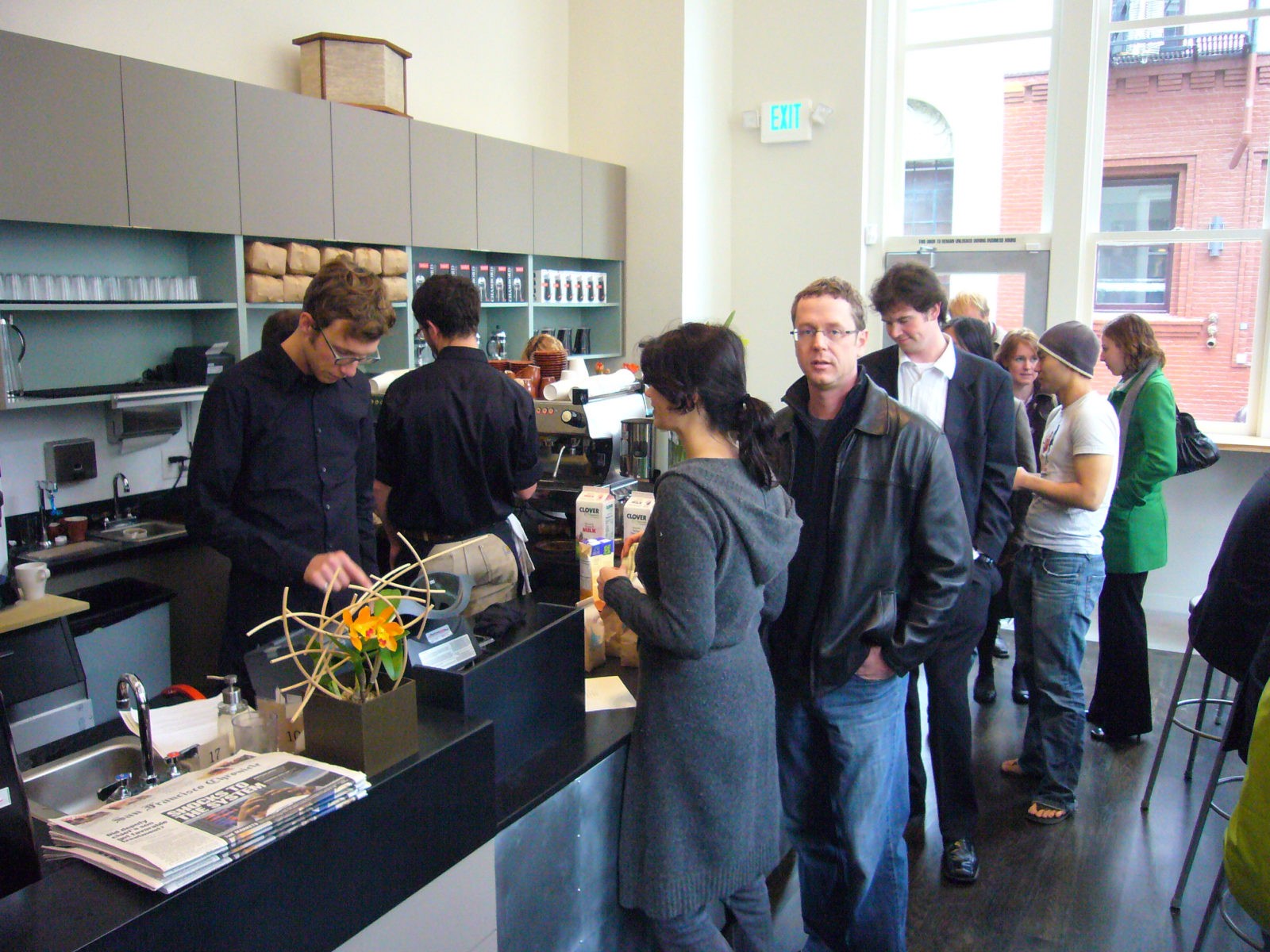By Ben Hartman, Blogger Local Kansas City Staff Writer
During a recent day on the beat for Blogger Local, I went to a fairly nice restaurant with a great atmosphere and flavorful menu items. The restaurant is situated in a highly trafficked area, full of tourists and sightseers. The upscale dinning establishment features an eclectic menu with a good spread of choices. I ordered my food and inquired as to whether they had espresso or not. The waiter told me that in fact they didn’t but that if I really wanted some espresso there was a cafe directly across from the restaurant. I looked over my shoulder in the direction they were pointing and sure enough about 20ft away, was a cafe that I had failed to notice on the way in. The cafe appeared as if it had all the staple elements of certified cafe. Espresso machines, beans, stacks of cups and jars full of biscotti. To me, I felt a strong disconnect between the close proximity of the restaurant and the cafe. I felt as if the cafe was so close that it was essentially apart of the restaurant itself. There is a saying an Ancient Mariner had for that feeling; water, water, everywhere, nor any drop to drink.
I kept trying to wrap my mind around why the restaurant didn’t have espresso? The restaurant specializes in breakfast and lunch. The food would pair well with the espresso and it seems like an essential part of getting a day started for many of the early morning patrons on their way to office jobs in the area. My line of thinking naturally lead me to my next question. Why not serve the cafe’s espresso and coffee? The logistical challenge couldn’t be too hard since the businesses are separated by a mere 25ft. It would seem like an easy fit for an opportunity to benefit from a symbiotic relationship. The restaurant could wash it’s hands of bulk storage, ordering and making the coffee they are currently producing and rely on their neighbor whose sole focus is making coffee. By choosing to use their neighbor’s services, the restaurant would ultimately increase the quality of the product they served and help to insure the lively hood of the business community they are a part of. It generally doesn’t do a business any good if their neighboring businesses are constantly empty or changing.
To me it appears very obvious that both businesses stand only to gain. (All of my ideas for a symbiotic relationship, rely on the assumption that both restaurants are on an even scale when it comes to the quality of food they serve.) The restaurant can easily add more options for their customers, while not taking on any additional stress for it’s staff. The cafe on the other hand, has equal opportunities to gain from an exchange of businesses between neighbors. The cafe would see an increase in their brand awareness and would have their brand identity paired with an upscale fine dinning establishment. Assuming that the increased volume from the additional customers of the restaurant didn’t overwhelm the logistics of the cafe, the cafe would only gain from the increased sales and business. I also see an opportunity for the cafe to work with the restaurant to create a signature blend, much like the Kansas City Roasterie coffee brand does for local businesses. Creating a custom blend help’s a brand’s reach and makes customers feel like they are getting to enjoy something privileged.
With all the advances in digital communication and the transfer of money electronically, I can’t imagine it would be too challenging to work out the logistics of how to get the restaurant customers’ orders to the cafe and how to settle the payment for the cafe’s products. The cafe could easily receive their orders via a wireless/blue tooth enabled printer that the restaurant has access to. They could even have orders placed through a simple electronic messaging platform so the cafe could receive orders and the restaurant could know when they are ready for their servers to pick up. The sales could be totaled up at the end of the day with an itemized print out or computer file and either paid for via a Square card reader enabled device, billed on a schedule or simply cashed out. The restaurant could keep a percent for facilitating the transactions and exclusively serving the cafe’s products.
This is truly a great opportunity for neighboring businesses who are not in direct competition to form a mutually beneficial relationship that will for one side give their customers more options and for the other an extension of their brand’s reach and increased exposure to a new customer base, with both sides seeing an increase sales.
Perhaps in this instance the businesses have already tried to make this happen and for some reason they have come to an impasse? If that’s the case then I commend them for at least trying and seeing opportunity around them. Blogger Local wants our reader’s who own their own business to take a look around them at their peers and business community neighbors to see who potential allies could be. Take this instance of how a potential opportunity to provide a business’ customers with more, can be applied to your own circumstance. Are there businesses around you that aren’t in direct competition for customers but that have customer bases that cross over into each other? How can you work with other businesses to provide your customers more, while ultimately reducing or adding negligible labor, costs or time to your overall business function?
It only takes a minute in this age of telecommunications, to reach out to your fellow business peers and start a dialogue. Start a dialogue with yourself first and ask yourself what additional services, products or information you could provide your customers. Asking these questions will lead you in the right direction to figuring out how you can augment your business at the benefit or your customers without impacting your operations.
Blogger Local is your source for business solutions and information that empowers.























